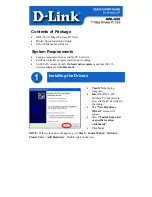
90
Digest Snooping configuration example
Network requirements
As shown in
, Device A and Device B connect to Device C, which is a third-party device. All
these devices are in the same region.
Enable Digest Snooping on the ports of Device A and Device B that connect to Device C, so that the
three devices can communicate with one another.
Figure 24 Network diagram
Configuration procedure
# Enable Digest Snooping on GigabitEthernet 1/0/1 of Device A and enable global Digest Snooping
on Device A.
<DeviceA> system-view
[DeviceA] interface gigabitethernet 1/0/1
[DeviceA-GigabitEthernet1/0/1] stp config-digest-snooping
[DeviceA-GigabitEthernet1/0/1] quit
[DeviceA] stp global config-digest-snooping
# Enable Digest Snooping on GigabitEthernet 1/0/1 of Device B and enable global Digest Snooping
on Device B.
<DeviceB> system-view
[DeviceB] interface gigabitethernet 1/0/1
[DeviceB-GigabitEthernet1/0/1] stp config-digest-snooping
[DeviceB-GigabitEthernet1/0/1] quit
[DeviceB] stp global config-digest-snooping
Configuring No Agreement Check
In RSTP and MSTP, the following types of messages are used for rapid state transition on
designated ports:
•
Proposal
—Sent by designated ports to request rapid transition
•
Agreement
—Used to acknowledge rapid transition requests
Device C
Root bridge
GE1/0/1
GE1/0/2
GE1/0/1
GE1/0/2
GE1/0/1
GE1/0/2
Root port
Designated port
Normal link
Blocked link
Blocked port
Device A
Device B
MST region
Содержание H3C S7500E-X
Страница 70: ...57 ...
















































